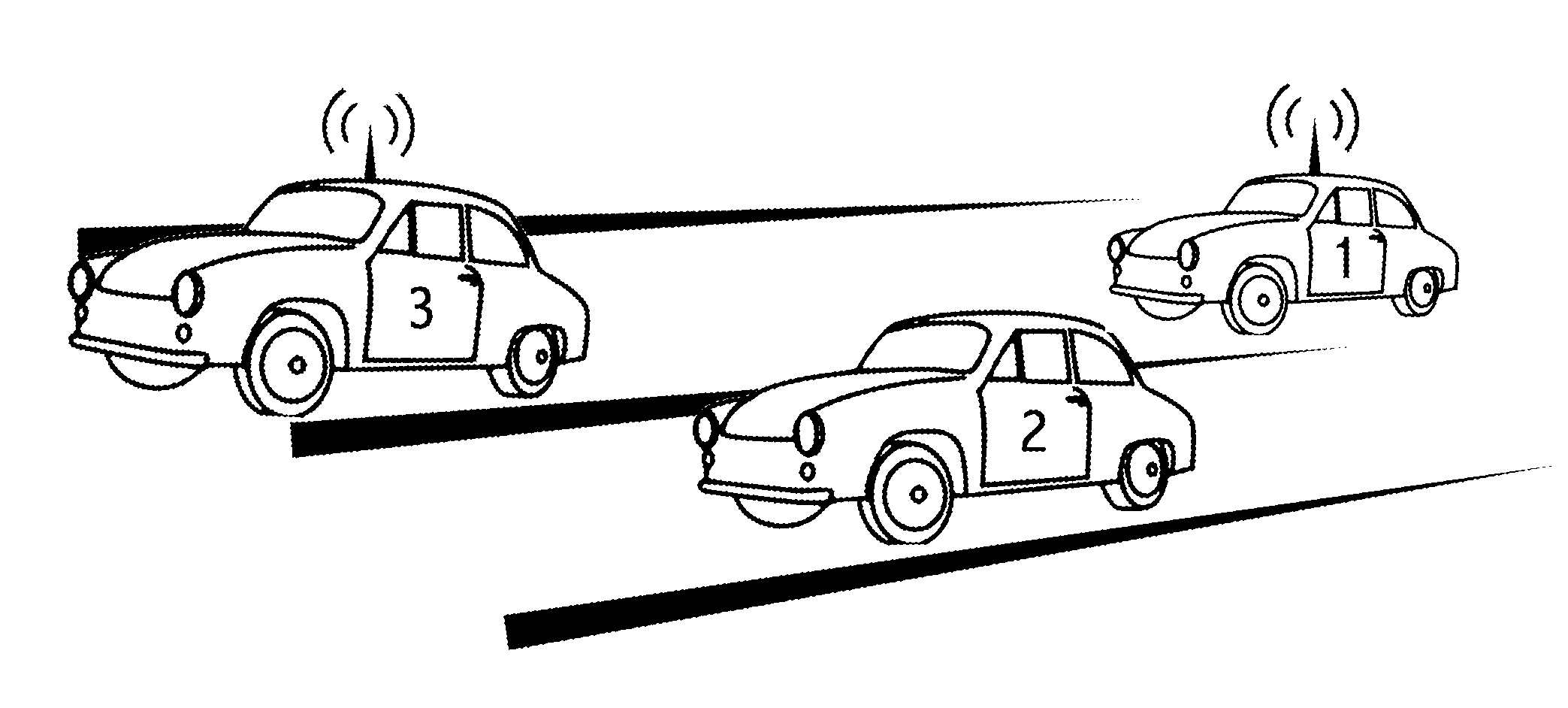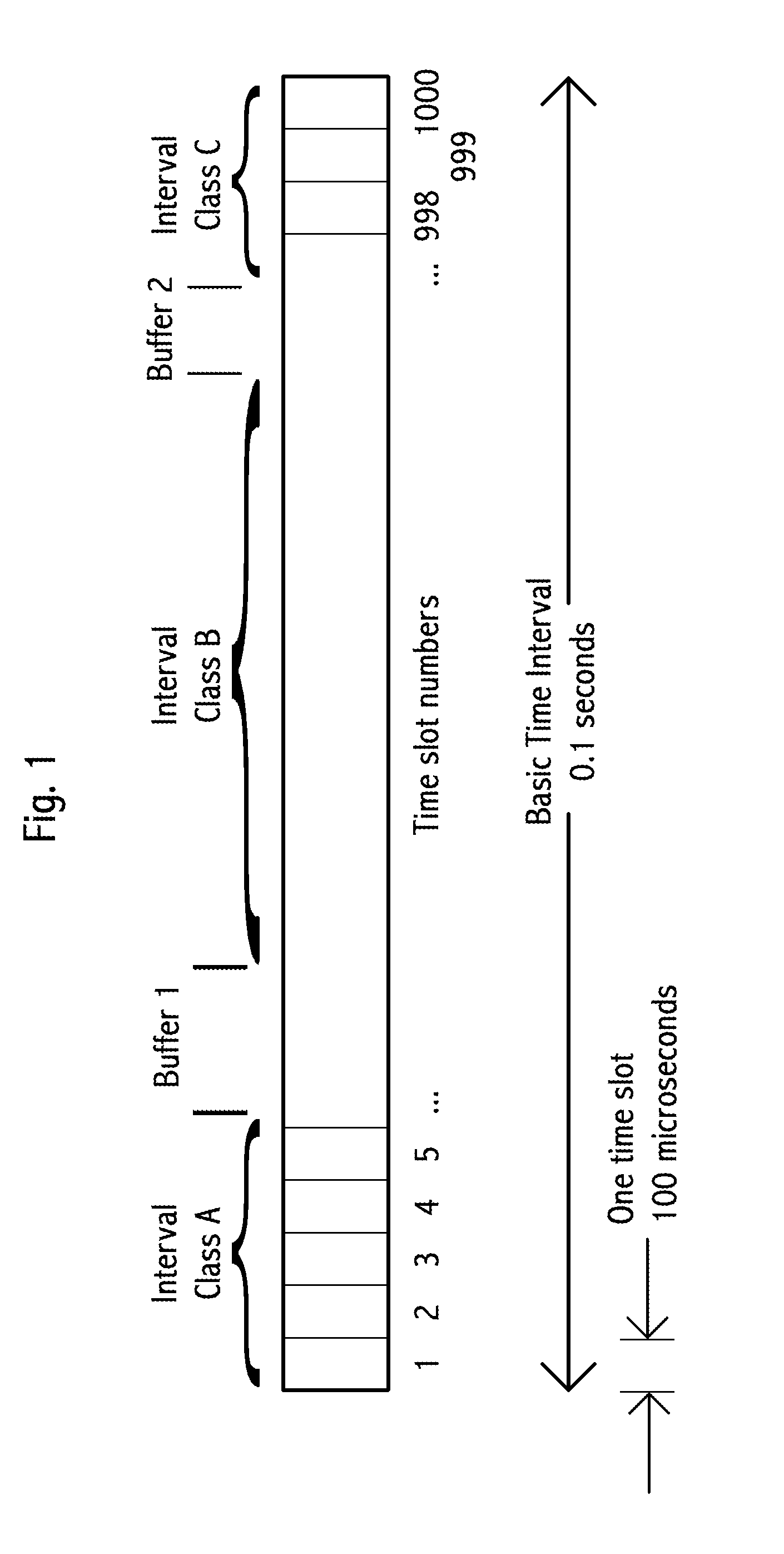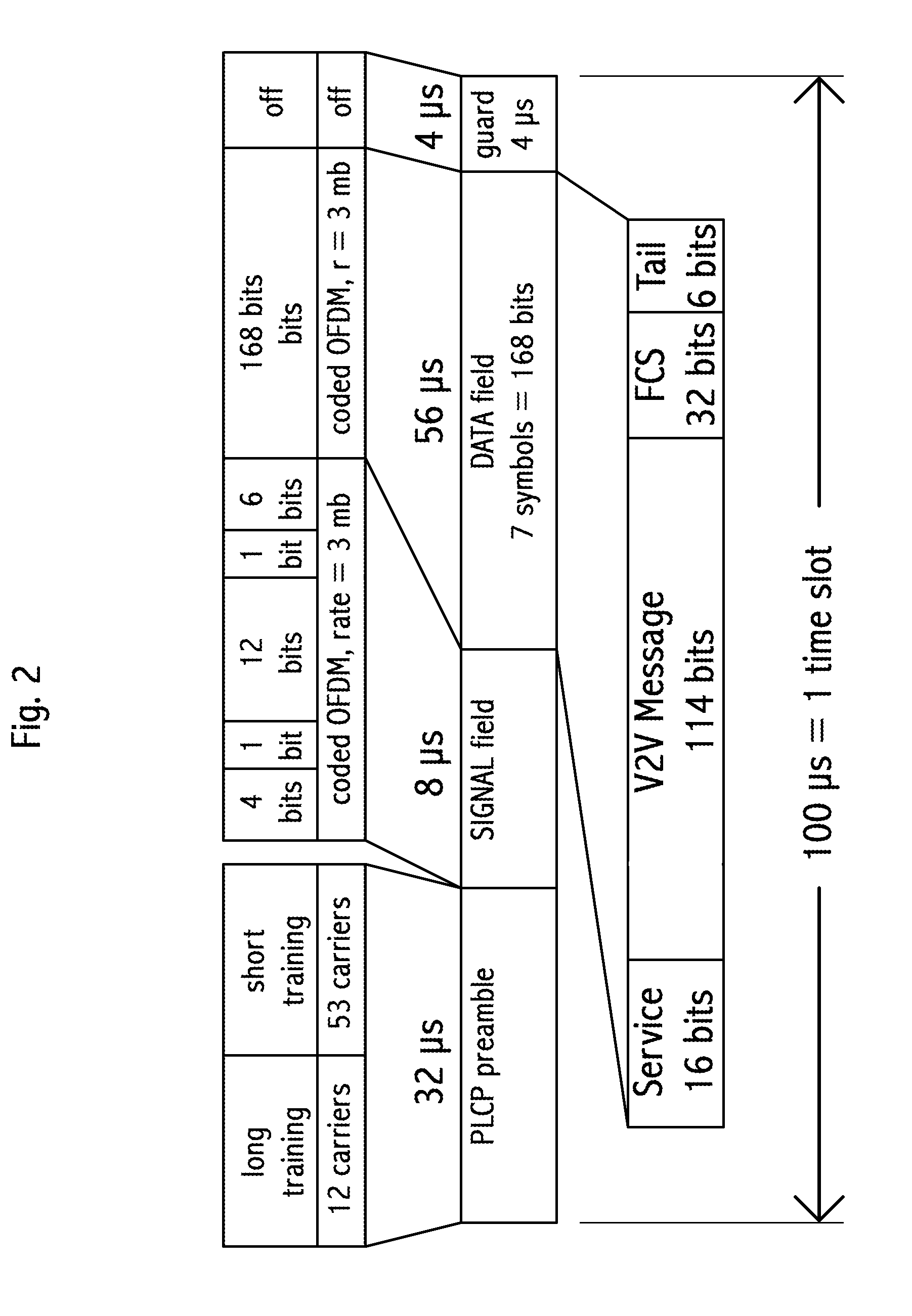Hybrid protocol transceiver for v2v communication
- Summary
- Abstract
- Description
- Claims
- Application Information
AI Technical Summary
Benefits of technology
Problems solved by technology
Method used
Image
Examples
Embodiment Construction
[0108]
Table of ContentsConcept and Definitions12Proxying15Physical Layer18Interval Classes19Selecting a New Time Slot27Interval Class B Message TimingError! Bookmark not defined.Vehicle Identification39Location and Velocity Coding41Power Management41Passive Reflectors42Interval Class B and Courtesy Messages42Message Collision Notification44Message Formats49Message Types66Position Determination70Lane Maps71Vehicle Elevation71Forwarding73Hacking and Security74Recording and Encryption77Traffic Signal Optimization77Time Base and Timestamps81Conserving Gas83Automatic Turn Signals84Definitions85Claim Specific Comments85
Concept and Definitions
[0109]A basic heart of a V2V system comprises an equipped transmission vehicle, an equipped receiving vehicle, an assigned spectrum and physical (wireless encodings, bandwidth and power) layer, and an agreed message protocol. The transmitting vehicle transmits its position, speed and direction. The receiving vehicle receives the transmission and compa...
PUM
 Login to View More
Login to View More Abstract
Description
Claims
Application Information
 Login to View More
Login to View More - R&D
- Intellectual Property
- Life Sciences
- Materials
- Tech Scout
- Unparalleled Data Quality
- Higher Quality Content
- 60% Fewer Hallucinations
Browse by: Latest US Patents, China's latest patents, Technical Efficacy Thesaurus, Application Domain, Technology Topic, Popular Technical Reports.
© 2025 PatSnap. All rights reserved.Legal|Privacy policy|Modern Slavery Act Transparency Statement|Sitemap|About US| Contact US: help@patsnap.com



